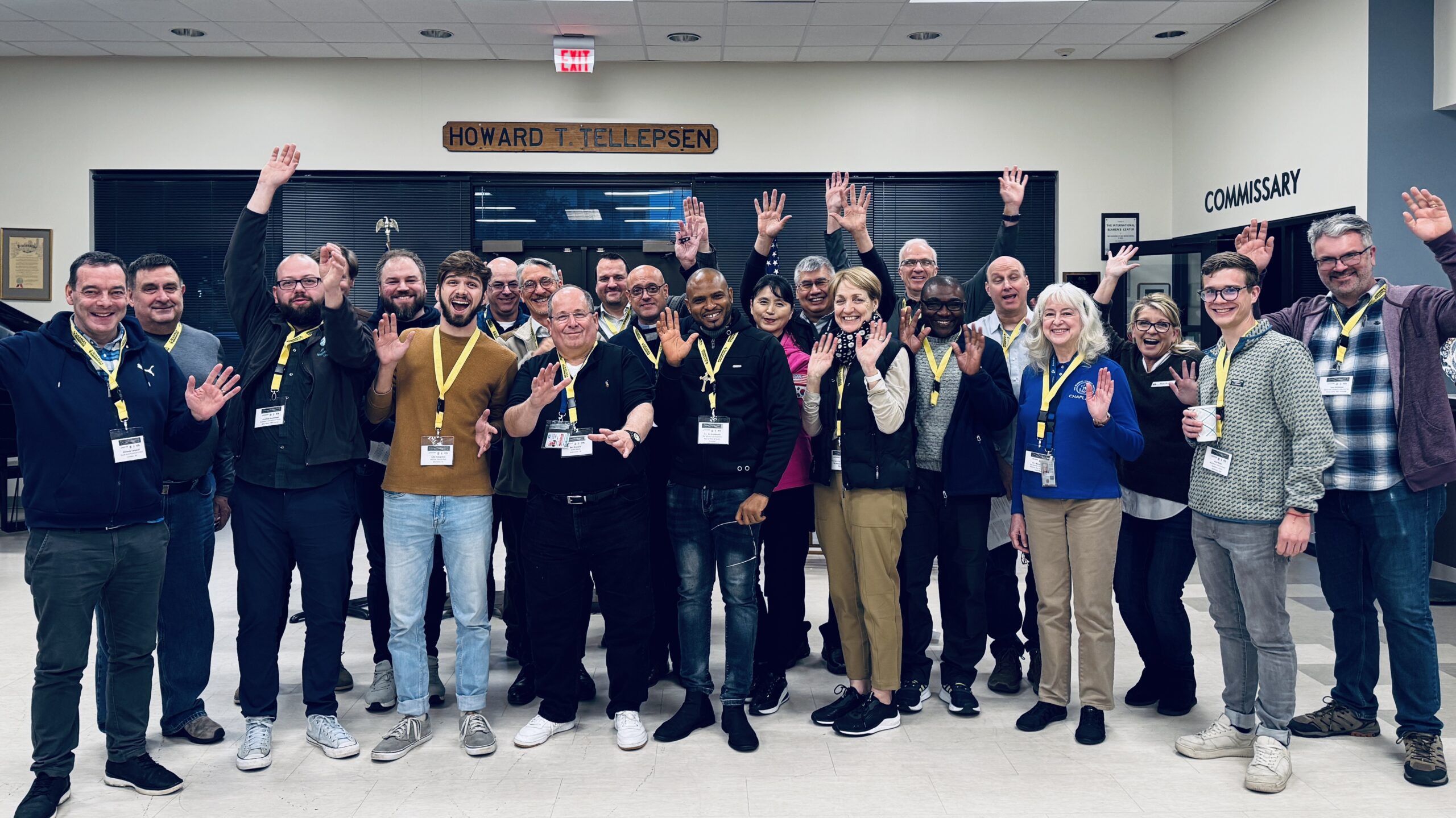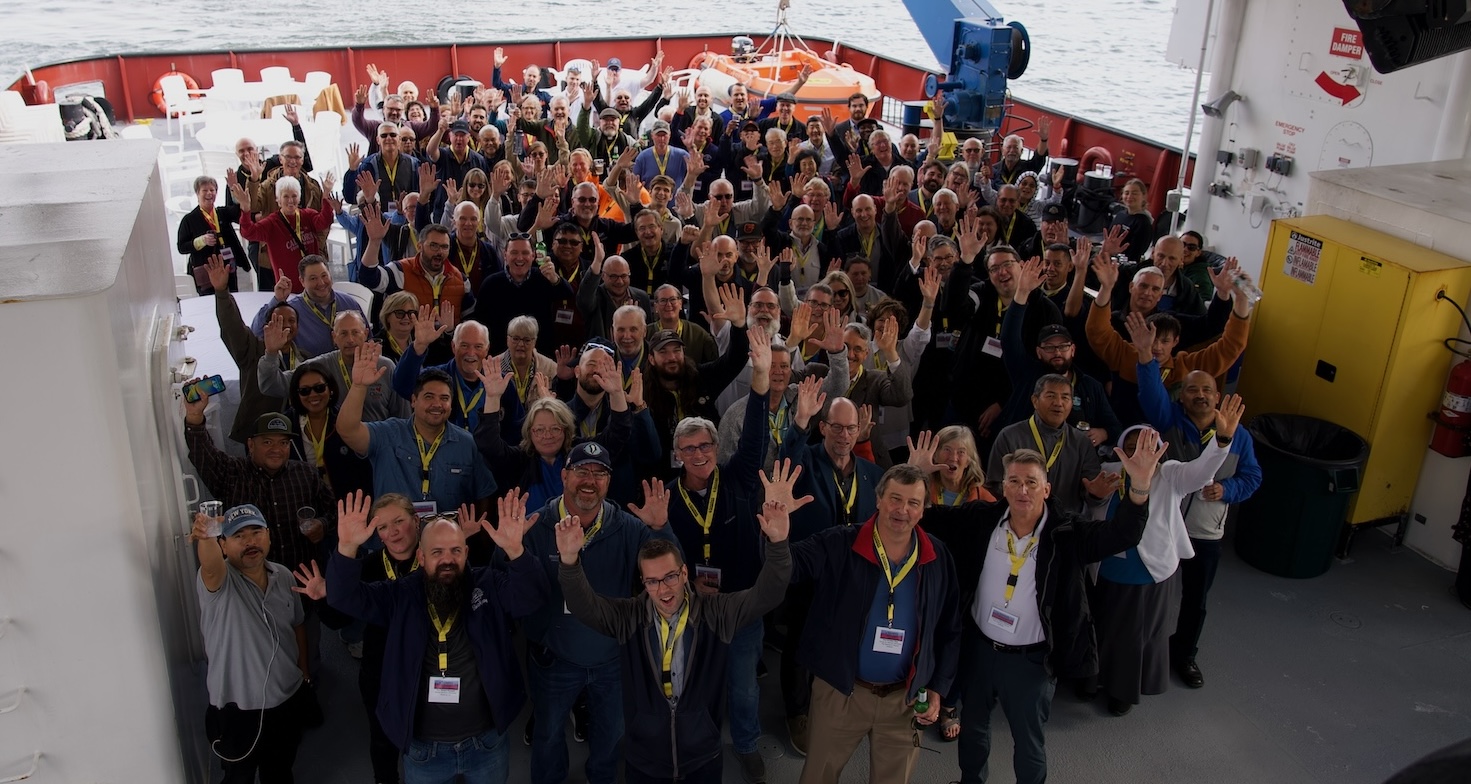by Susan Huppert, NAMMA
The role of chaplains in the ministry to seafarers extends beyond the spiritual. It is holistic at its core. During recent months, as the global pandemic has subsided and the vaccination of seafarers across the globe has reached most seafarers, one ongoing concern is restrictions to shore leave.
Along the northwest coast of North America, those who serve this mobile workforce are reporting that shore leave is granted more liberally thanks to the support of chaplains and ship visitors.
At the Port of Vancouver, British Columbia, The Ministry to Seafarers Chaplain Gary Roosma, and his co-workers log many visits per month. They see shore leave granted to seafarers at a steadily increasing rate. Yet, there is a sense that there is more to be done.
“I ask seafarers when I board their ships if they are allowed to go ashore,” said Roosma. “They affirm they are allowed, but… and they pause as if there was more they wanted to say but don’t.”
“On one ship, I could tell these guys were glum.”
Later Roosma returned to the vessel with Christmas gifts for everyone and through further conversation found that the captain was not granting the allowed shore leave.
Using the Ship Safety Bulletin No. 19/2022 issued by Transport Canada that defines the provision of shore leave, shipmasters, are now being reminded of the legal obligation to approve shore leave for seafarers. The Ship Safety Bulletin evokes the requirement as documented also under the Maritime Labour Convention, 2006: “Seafarers shall be granted shore leave to benefit their health and wellbeing consistent with the operational requirements of their positions.”
The position of advocacy for seafarers is critical. Seafarers respect the authority on board and are hesitant to challenge their superiors regarding shore leave. Through respectful intervention, chaplains and ship visitors can highlight the law and make headway for the crew regarding their wellbeing.
When seafarers are still onboard while the vessel is in port, Roosma meets with the ship captains and clearly states what Transport Canada has issued. Since implementing this practice, the reality of seafarers leaving vessels for shore leave is “steadily increasing.”
In particular, Chinese ships and Chinese crew on others are experiencing very limited shore leave. In the Vancouver port, they are very strict about this, according to Roosma.
Deacon Dileep Athaide, National Director for Stella Maris in Canada visits ships in Vancouver also. He sees significant progress in the past couple of months with seafarers taking shore leave.
At the ecumenical Seafarers Ministry in Seattle, WA, Interim Director Julia Cooper, echoes the same.
“During the last six months shore leave has increased quite a bit. The majority of the seafarers take shore leave,” she said. “It is a positive sign when a crew asks to go sightseeing rather than just getting their necessities at the local store.”
Cooper notes some captains and companies still say no. If a ship is sailing directly to China, has Chinese seafarers or is flagged in China there is no shore leave. An expired Visa, common among Filipino crew members is a reasonable deterrent. Others may be convenient.
According to Athaide, being too busy can be legitimate justification, but a vague appeal to COVID-19 is no longer a valid reason.
“We need to put subtle pressure on senior officers by reasoning with them. We must be very clear about seafarers’ health and safety and use the Transport Canada bulletin,” said the deacon.
“Although we do not enforce it, we can mention that to deny shore leave could be listed as a deficiency which could be enforced.”
Along with the ongoing concern for Chinese seafarers, Burmese are also commonly prohibited from taking shoreleave. In light of this segregation among the seafaring population, Stella Maris in Vancouver provides six mobile wi-fi units for those on board with little to no access, takes care packages, and spends more time on board.
In the Port of Oakland, CA, Robert Wilkins, Sr. serves concurrently as Chief Program Officer for the Seafarers Ministry of the Golden Gate and Executive Director of the International Maritime Center.
He too sees improvements to shore leave for seafarers. However, as Oakland is a secondary port, not a port of entry, most of the seafarers have had their needs addressed at the previous port. He finds ships in Oakland remain for less than 48 hours.
Wilkins reports some of the concerns among the shipping companies in his area include Eastern Europeans jumping ship and the lack of access for Chinese seafarers.
“We have a heavy dose of traffic from China,” he said. “Ships flagged in China have no shore leave,” he said. “We need to expand our vision of what it means to meet the needs of seafarers.”
The challenge remains to care for all seafarers at the highest level possible -physically, spiritually, and emotionally. Holistic outreach and shore leave advocacy continue to be core services for chaplains today.
Photo: courtesy of the Ministry to Seafarers Vancouver.





